Hu Xiangcheng Solo Exhibition: Itinerant Deities
发起人:Jessie.Xie 回复数:0
浏览数:9844
最后更新:2010/10/26 17:07:49 by Jessie.Xie
Duration: October 20th, 2010 – January 5th, 2011
Location: Shanghai Gallery of Art @ Three on the Bund
Address: No.3 the Bund 3rd Floor 3 Zhongshan Dong Yi Road Shanghai
Western Gods and Goddesses, omnipresent as décor in the new Chinese city, crosses paths with abandoned, flea-market Buddhas masquerading as authentic signifiers of what may in fact be the tired remains of cultural tradition. Do these forms carry any meaning outside of their marketability and token spirituality? Does the schizophrenic, iconographic overload of our late-capitalist, globalized society have a place for faith? Or is our faith locked up in the plastic promises of material consumption and digital gadgetry? Is our effort to control the world with rationality; its grid cities, credit cards and cellular devices subverted by the control that these things exercise over us? Or are they merely substitutes for the idols of our distant past? In his first exhibition in over three years Hu Xiangcheng’s “Itinerant Deities” probes the conundrum of contemporary belief systems by transforming the gallery through large scale installation, painting and photography works.
After Graduating the Shanghai Theatre Academy in 1977 Hu Xiangcheng spent time living in Tibet, Japan and Africa. His painting and installation works have been exhibited internationally at The Shanghai Biennial; The International Sculpture and Installation Exhibition in Venice, Italy; The Yokohama Triennial in Japan, and San Paulo Architecture Biennial in Brazil, etc. Hu’s work also extends to endeavors for the preservation of traditional culture such as the Yellow BOX project in Shanghai, and a reconstructed village located in Jing Ze Town of Qingpu District both which involve traditional Chinese architecture, space, utensils, and rituals. He believes that a contemporary artist should not merely address social issues, but more actively look for solutions.
Regarding the “Itinerant Deities”
by Hu Xiangcheng
In western museums, we can easily find that numens from all over the world are being collected as disquisitive objects. However, these exotic deities seldom appear on the western architectures, or in their daily life. On the other hand, tons of abandoned Chinese Buddhas that were respected and awed in the time past can be brought in old furniture stores throughout China today. Atheism has been deeply established and the deities have to leave from home. Poetic life gives way to the material needs. Many copies of western Gods and Goddesses are placed in the current real estate projects with the advertising intention instead of spiritual needs. Since the Humanism was much accounted of, human beings have roused up day by day. Deities were substituted by humans to create everything. The responsibilities that deities used to takeover all fell onto people’s shoulders. I am wondering if we humans could arrange the life and death, the happiness and sorrow properly.
This world is occasionally established, approximately dominated by some creature which we don’t know the truth. When we are gradually getting away from our original patron and believing that humans can make everything possible, we are being stuck with an extreme sense – the “square” (rectangular or square) – a rational product in the image world, but seldom exist in the nature world. The more human civilization developed, the more “squares” appeared. From the certification of birth to the documentation of death, from the urban design to the project programming, numerous “squares” are accompanied and even controlling our lives. The “square” has its rational reason for being existed, which we can tell from the Bauhaus; therefore it is allowed to survive. If the alien lives have sense, the “square” will finally control and dominate them.
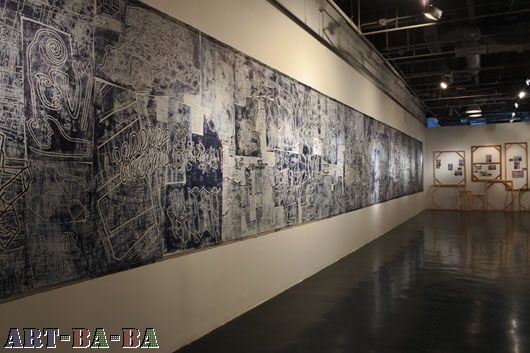
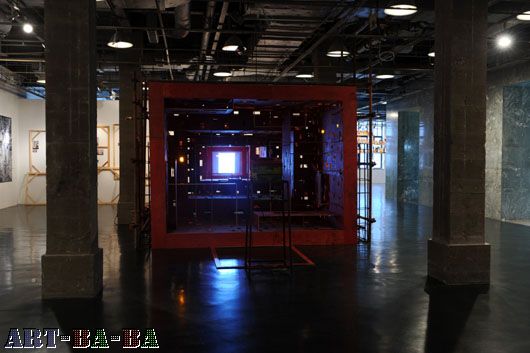
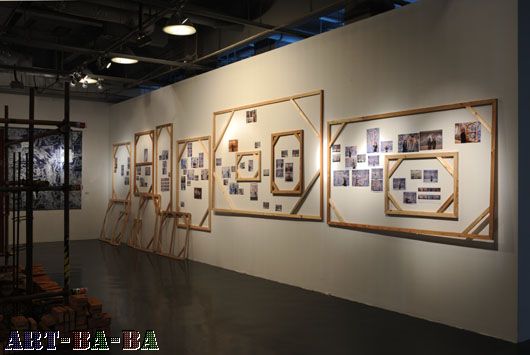
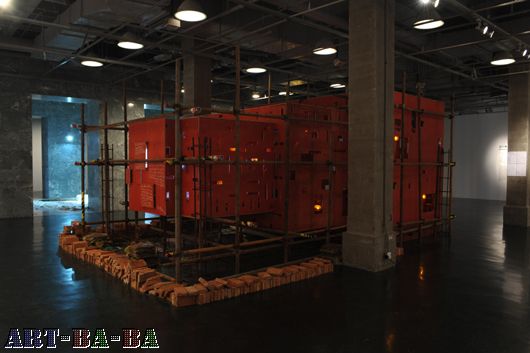
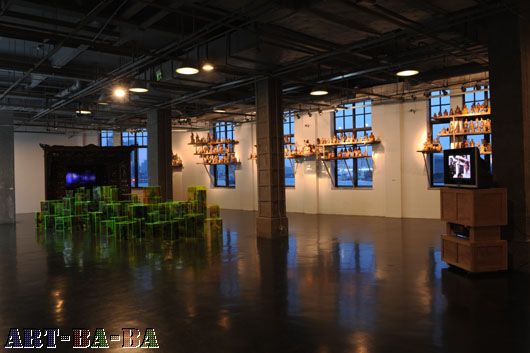
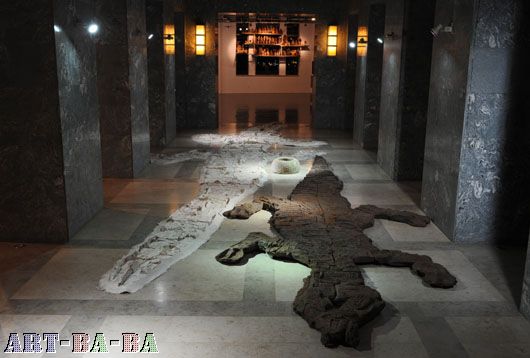
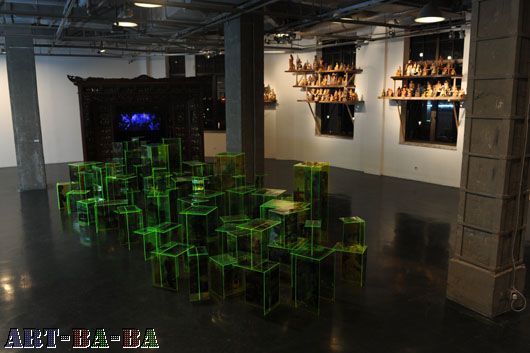
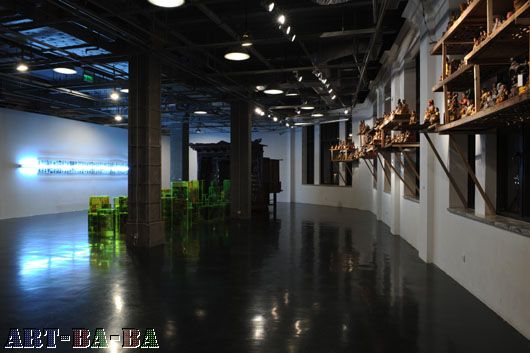
Location: Shanghai Gallery of Art @ Three on the Bund
Address: No.3 the Bund 3rd Floor 3 Zhongshan Dong Yi Road Shanghai
Western Gods and Goddesses, omnipresent as décor in the new Chinese city, crosses paths with abandoned, flea-market Buddhas masquerading as authentic signifiers of what may in fact be the tired remains of cultural tradition. Do these forms carry any meaning outside of their marketability and token spirituality? Does the schizophrenic, iconographic overload of our late-capitalist, globalized society have a place for faith? Or is our faith locked up in the plastic promises of material consumption and digital gadgetry? Is our effort to control the world with rationality; its grid cities, credit cards and cellular devices subverted by the control that these things exercise over us? Or are they merely substitutes for the idols of our distant past? In his first exhibition in over three years Hu Xiangcheng’s “Itinerant Deities” probes the conundrum of contemporary belief systems by transforming the gallery through large scale installation, painting and photography works.
After Graduating the Shanghai Theatre Academy in 1977 Hu Xiangcheng spent time living in Tibet, Japan and Africa. His painting and installation works have been exhibited internationally at The Shanghai Biennial; The International Sculpture and Installation Exhibition in Venice, Italy; The Yokohama Triennial in Japan, and San Paulo Architecture Biennial in Brazil, etc. Hu’s work also extends to endeavors for the preservation of traditional culture such as the Yellow BOX project in Shanghai, and a reconstructed village located in Jing Ze Town of Qingpu District both which involve traditional Chinese architecture, space, utensils, and rituals. He believes that a contemporary artist should not merely address social issues, but more actively look for solutions.
Regarding the “Itinerant Deities”
by Hu Xiangcheng
In western museums, we can easily find that numens from all over the world are being collected as disquisitive objects. However, these exotic deities seldom appear on the western architectures, or in their daily life. On the other hand, tons of abandoned Chinese Buddhas that were respected and awed in the time past can be brought in old furniture stores throughout China today. Atheism has been deeply established and the deities have to leave from home. Poetic life gives way to the material needs. Many copies of western Gods and Goddesses are placed in the current real estate projects with the advertising intention instead of spiritual needs. Since the Humanism was much accounted of, human beings have roused up day by day. Deities were substituted by humans to create everything. The responsibilities that deities used to takeover all fell onto people’s shoulders. I am wondering if we humans could arrange the life and death, the happiness and sorrow properly.
This world is occasionally established, approximately dominated by some creature which we don’t know the truth. When we are gradually getting away from our original patron and believing that humans can make everything possible, we are being stuck with an extreme sense – the “square” (rectangular or square) – a rational product in the image world, but seldom exist in the nature world. The more human civilization developed, the more “squares” appeared. From the certification of birth to the documentation of death, from the urban design to the project programming, numerous “squares” are accompanied and even controlling our lives. The “square” has its rational reason for being existed, which we can tell from the Bauhaus; therefore it is allowed to survive. If the alien lives have sense, the “square” will finally control and dominate them.







